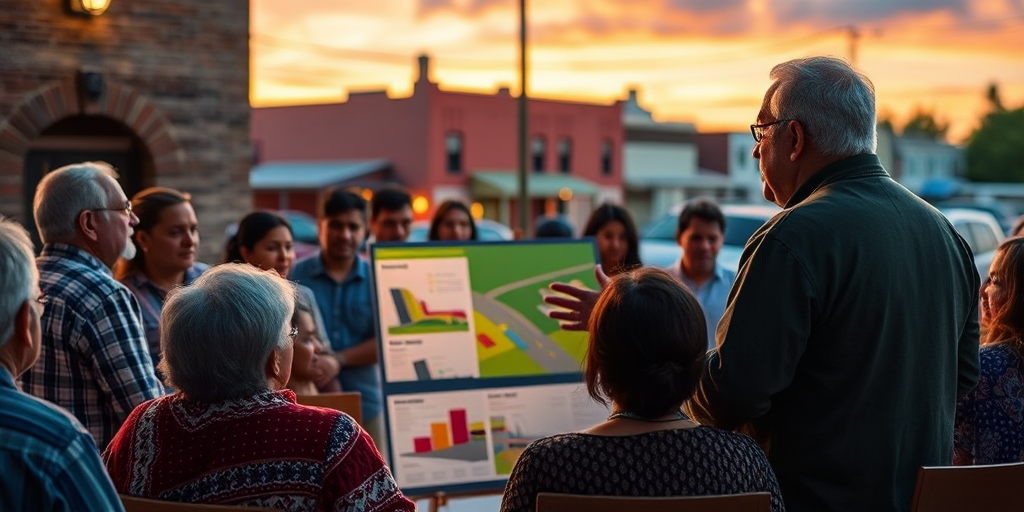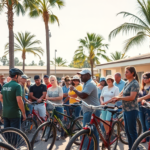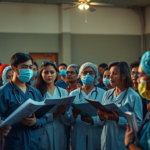Hidalgo County RMA Chairman Calls for Regional Unity at RGVMPO Meeting
In an urgent plea for collaboration, Robert L. Lozano, Chairman of the Hidalgo County Regional Mobility Authority (HCRMA), has called for unity in addressing critical transportation projects in the Rio Grande Valley. The recent meeting of the Rio Grande Valley Metropolitan Planning Organization (RGVMPO) policy board on July 21, 2025, witnessed Lozano advocating for a united front amid financial pressures and development imperatives.
Crucial Funds at Stake Amid Region’s Growth
At the heart of Lozano’s appeal lies the “use it or lose it” quandary surrounding $102 million in Category 7 funds from the Texas Department of Transportation. This funding, earmarked for the Valley’s shovel-ready projects, risks reallocation if not committed soon. Historically, the HCRMA has not made claims on these funds through RGVMPO. However, the urgency of preventing potential losses due to funding inactivity has prompted a rare request from the authority.
Lozano stated, “This situation demands a collective push from all stakeholders involved to ensure that we do not lose sight of our community’s needs, especially when such significant funding is on the line. My message, consistent from the beginning, is about unity.”
Importance of Segment 4 in the County Loop Project
A focal point during the meeting was Segment 4 of the Hidalgo County Loop project. This section, integral to improving connectivity to international trade bridges, has achieved significant milestones, including environmental clearances, TxDOT-approved schematics, and functional classification from the Federal Highway Administration.
Prior backing by the policy board had designated Hidalgo County and the City of Mission as project sponsors for related segments. “Our joint venture under the Metropolitan Transportation Plan signals a proactive approach where non-tolled options remain prioritized,” Lozano highlighted, underscoring a region-wide cooperative strategy.
Local Perspective and Community Challenges
For South Texas and the rest of the RGV, efficient infrastructure development isn’t just a matter of convenience; it’s central to economic sustainability and community welfare. The overarching objective outlined by Lozano is for counties and cities within the RGVMPO sphere to harmonize efforts and resources, preventing project stagnation and future funding jeopardy.
In the words of Joseph Puig, a regional transportation consultant, “Cross-county collaboration as championed by Chairman Lozano could redefine how swiftly we meet infrastructural demands. Future regionalization of projects holds the key to unlocking economic potential not only for the communities directly involved but for Valley residents collectively.”
The meeting also reflected a broader community interest, witnessed by public input indicating a deep desire to align more holistically for collective progress rather than fractured advances.
Potential Long-Term Implications and Regional Approach
Lozano’s vision extends beyond individual segments, aspiring to lay groundwork for future inter-county cooperation. This could manifest not only in shared transportation infrastructure but expanded to other essential services vital for the Valley’s development. His open invitation to assist any community without the necessary resources emphasizes HCRMA’s commitment to nurturing regional unity.
Nevertheless, some stakeholders maintain cautious optimism. Balancing the necessity for expediency with comprehensive planning remains key. Dr. Elena Torres, a social economist, pointed out that “While there’s urgency, ensuring that rigorous planning backs every financial commitment is essential for avoiding long-term fiscal and social pitfalls.”
Yet, as the Rio Grande Valley continues to grow, the promise of regional integration offers opportunities not just in immediate project advancements, but strategically aligns future infrastructural goals.
Moving Forward: A Call to Action
Community engagement remains paramount as the stakeholders work towards securing current and future transportation improvements. For local residents and involved entities, access to up-to-date information and participation opportunities is critical. The policy board, along with HCRMA, continues to underscore the necessity for informed public involvement.
Those interested in developments are encouraged to attend similar meetings or access details available on the RGVMPO website and respective city channels.
Conclusively, Lozano’s appeal for a unified RGV highlights a critical junction in regional planning—one that compels Valley stakeholders to leverage combined strength for promising decades ahead without sacrificing equitable progress. As discussions progress, this initiative will continue to shape the narrative surrounding regional networks and the respected significance of efficient, collaborative action across South Texas.







